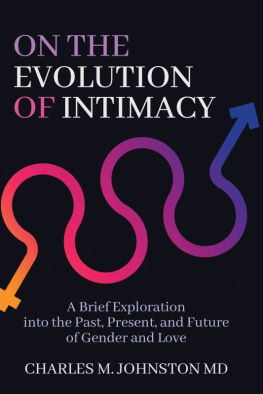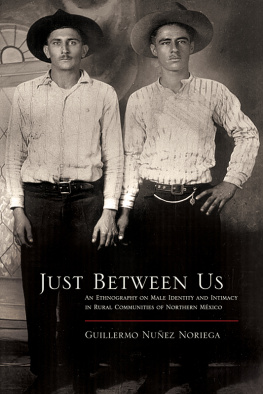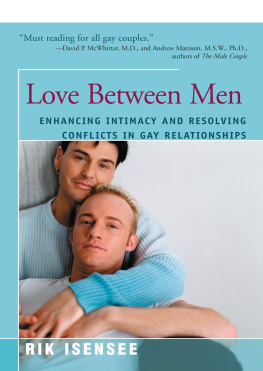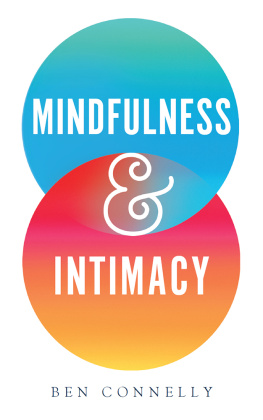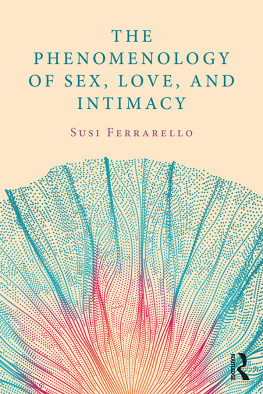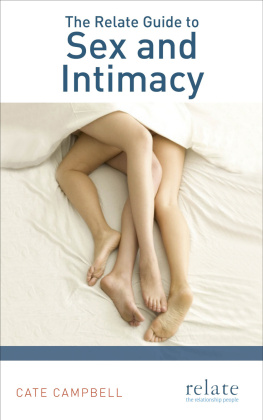ON THE EVOLUTION OF INTIMACY
Also by Charles Johnston:
The Creative Imperative: Human Growth and Planetary Evolution
Necessary Wisdom: Meeting the Challenge of a New Cultural Maturity
Pattern and Reality: A Brief Introduction to Creative Systems Theory
The Power of Diversity: An Introduction to the Creative Systems Personality Typology
An Evolutionary History of Music: Introducing Creative Systems Theory Through the Language of Sound (DVD)
Quick and Dirty Answers to the Biggest of Questions: Creative Systems Theory Explains What It Is All About (Really)
Cultural Maturity: A Guidebook for the Future
Hope and the Future: Confronting Todays Crisis of Purpose
Online:
The Institute for Creative Development: www.CreativeSystems.org
Creative Systems Theory: www.CSTHome.org
Cultural Maturity: www.CulturalMaturity.org
The Creative Systems Personality Typology: www.CSPTHome.org
An Evolutionary History of Music: www.Evolmusic.org
Cultural Maturity: A Blog for the Future: www.CulturalMaturityBlog.net
Looking To The Future podcast: www.LookingtotheFuture.net
The Institute for Creative Development (ICD) Press, Seattle, Washington
Copyright 2019 by Charles M. Johnston, MD. All rights reserved. No part of this book may be reproduced, except for reviews and brief excerpts with attribution, without the written permission of the publisher. Manufactured in the United States of America. For information, address The Institute for Creative Development (ICD) Press, 4324 Meridian Ave. N., Seattle, WA 98103, or .
ISBN: 978-1-7322190-3-8
Cover design by Java Niscala
Author photo by Brad Kevelin
Library of Congress Control Number: 2019905436
First printing 2019
ON THE EVOLUTION OF INTIMACY
PREFACE
A World of Change
Nothing more defines gender and love today than change. Indeed, because these changes are so strikingand so far-reaching and fundamental in their implicationsI often use them as examples of the broader changes that are reordering culture. This short book turns specifically to how changes in the worlds of gender and love are altering the human experience.
Two questions will be constant companions throughout these reflections. First, just how do we best understand the changes we see and interpret their effects? Some, such as greater gender equality, are obviously positive, while others, such as increasing divorce rates, can seem much less so. And second, just what do todays easily confusing new realities ask of us? What awarenesses, skills, and capacities will be needed if we are to successfully navigate realities that are likely to change even more dramatically in decades ahead?
The perspective I will draw on in addressing these questions is unusual. Im a psychiatrist, and much in my observations will reflect my experience working hands-on with individuals and couples who are attempting to make their way in todays new gender and love landscape. But Im also a futurist. Because of this, what I propose will as much come from understanding what we see today in the context of more encompassing cultural changes.
In addition, in contrast to what we commonly encounter with both popular and academic cultural commentary, I will engage these concerns from a very big-picture, long-term vantage. I will at times look back thousands of years. And in looking ahead, my concern will often be as much with what we are likely to encounter twenty, fifty, or a hundred years from now as with the changes we confront today.
That fact that I do so is of much more than just abstract interest. By the books conclusion, it should be clear that we can understand gender and love at more than a surface level only with big-picture, long-term perspective. It should also be clear that big-picture, long-term perspective is necessary if we are to engage todays gender- and love-related conversations and controversies with the needed sophistication. The books conclusions will frequently be provocative and often controversial. A small handful provide a preview of coming attractions:
1) I will describe how the ways we think about and experience love have evolved, and how they continue to evolve. And I will propose that our times challenge us to engage a new chapter in that evolution, one as significant in its newness as that which brought us Romeo and Julietstyle romantic love 300 years ago.
2) I will describe how, in similar ways, our thinking about identity has evolved and continues to evolve. And I will propose that changes happening today in how we think about identity are as fundamental in their significance as those that brought us the modern-age concept of the individual and modern institutions such as representative governance. Of particular significance for this inquiry, this includes changes in how we think about gender identity.
3) We will examine how, consistent with the fundamental nature of these changes, both love and identity are requiring skills and capacities new to us as a species. We will see how this is similarly the case whether our concern is authentic equality between the sexes, effectively honoring gender diversity, or learning to love in ways that can work going forward. Much of my reason for writing this book is a desire to help people understand and develop those needed new skills and capacities.
4) We will also examine further essential awarenesses that come from this new picture. For example, we will look at how our historical tendency to view men and women as polar opposites has had more to do with how our thinking processes have worked in times past than it does with the actual truth of the matter. We will also look at how a more big-picture perspective reveals gender-related insights that at first might seem paradoxical: We come to see that men and women are more similar than we have assumed in times past. And, at the same time, we come to better appreciate real differences.
5) Throughout these reflections, I will observe how the tasks ahead challenge both men and women. These new tasks relate both to how men and women see themselves and how each views the other. For example, we will look at how men and women are equally capable of causing harm in relationshipsin their own ways of being violent. We will also look at how historical perspective brings into question commonly accepted conclusions about the roots of gender discrimination and conflict between the sexes, and how this perspective requires both men and women to take greater responsibility. And we will look too at how men and women in our time each tend to be disconnected from aspects of our complex natures that we need for really deep human relating. I will propose that the changes this book is about require a depth of engagement with that complexity that is only now becoming possibleindeed, that they follow naturally from it.
Another way this inquiry is unusual is in the conceptual approach that underlies its conclusions. To get the needed big-picture, long-term perspective, the book draws extensively on the ideas of Creative Systems Theory (CST), a comprehensive framework for understanding purpose, change, and interrelationship in human systems which was developed by myself and my colleagues at the Seattle-based Institute for Creative Development over the last forty years. CST views history as an evolutionary process that goes through identifiable developmental stages. Applying the theory to gender and love will let us step back and better appreciate these essential aspects of human experience in the larger context of cultures evolving story.

